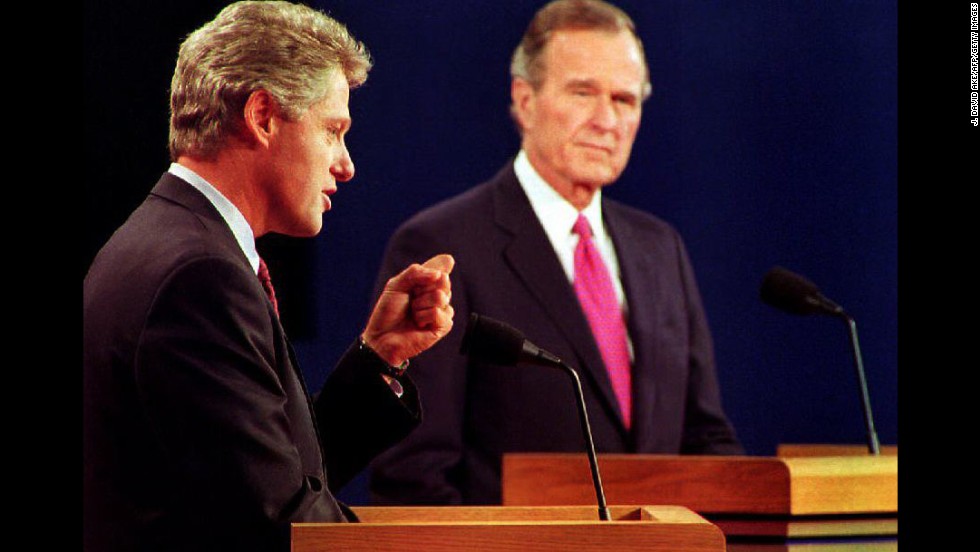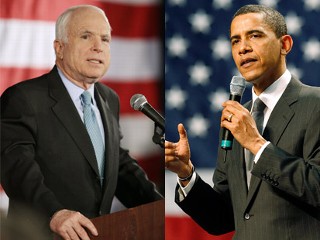Charisma and Humility in American Politics, Guest Blog by Yinnan Shen
This is the eighth in a series of guest blogs featuring my recently-graduated capstone (thesis) advisees in New York University’s Master’s in Public Relations and Corporate Communication.
See my earlier posts:
- Female Leadership and Trust, by Carolina Perez Sanz
- Does Brand Loyalty Always Help in a Crisis? by Nicky Honghao Ruan
- On Surviving Online Shaming by Maura Yates
- On the Power of Why in Business by Jocelyn Jiaxin Cao;
- On Wall Street, Reputation, and Recovery by Julia Sahin;
- On Changing Narratives in Oil Conflict Regions by Claudia Espinel;
- A 10-C Model for Apologies by Iris Wenting Xue.
In this blog Yinnan Shen summarizes her capstone on the best blend of charisma and humility to assure success in American presidential politics.
As she shares in her introduction, Yinnan, who did her undergraduate work at Beijing Language and Culture University, came to the United States with an idealized view of American politics. The last presidential election was the first she saw up close. She chose her capstone topic not only to make sense of this election, but also as an opportunity to dive deeply into American history, politics, and culture in the past 60 years.
While both charisma and humility have been studied extensively, there is very little study of the combination of the two, especially in politics. Her contribution is a good start on a topic that is ripe for continued study: how to balance the seemingly contradictory personality qualities of charisma and humility.
You can download her capstone here.
This week Yinnan starts work as a research analyst at Logos Consulting Group.
———————————————————————————————————————————
Charisma And Humility in Political Leadership
by Yinnan Shen

Yinnan Shen
2016 was a very interesting year for me, a foreigner who has a keen curiosity about American politics, to experience living in the States. I mean the presidential election part.
I arrived assuming that people are all rational, that there should be a rigorous system with a rigorous standard for choosing the president. That voters rationally assess each candidate referring to that standard, checking boxes, to pick the best candidate to become their president. But sorry Adam Smith; we humans don’t actually make rational choices.
Furthermore, the gap between reality and perception also gets in the way of making rational judgments.
That’s why charisma and humility comes into play in political leadership election and retention. Self-identification and emotion are two key drivers of followers in determining whom to vote for. And charisma and humility appeal directly to followers’ self-identification and emotion, affect their decision-making process unconsciously.
Also, charisma and humility are complementary in assessing a political leader. Humility can prevent charismatic leaders from being egocentric, arrogant, or corrupted.
My capstone therefore takes a deep dive into political leaders’ charisma and humility, and their correlation with political election and retention in the United States of America.
The methodology of this research is simple; build the measurements of humility and charisma first, and apply the measurements on candidates of historical presidential election cycles to find the correlations.
Measurements of Charisma and Humility
In the first part of my capstone, I studied theories on defining and measuring charisma and humility in the history, and then defined the two characteristics and identified key components of them based on past research and my own understanding. I developed a 10-item scale of charisma and a 5-item scale of humility.

Charisma definition: a set of extraordinary qualities and behaviors that inspire admiration, loyalty, and devotion among people, and that naturally separate the individual who possess these qualities from average people.
Charisma measurement:
Leader’s behavior and attributes:
- An idealized and even prophetic vision. Having a captivating vision that projects an idealized future for the followers is the foremost characteristic of charismatic leaders. The vision that he or she proposes is most likely to be a challenge to the status quo, a promise to change what has been done wrong in the past to actually excite follower’s trust, sense of belonging, and sense of mission.

- Articulation. The articulation of the vision is the key to help the vision reach the audience. Charismatic leaders are usually seen to be eloquent and persuasive – to be the masters of communications. Additionally, their tone of voice is always found to be captivating and engaging.
- Sensitivity to the environment. Charismatic leaders are most likely to rise from chaos or crisis. They tend to catch subtle trends and patterns of the world around us, which enables them to seize and even create opportunities before anyone else even notices. And this is the birth of their visions.
- High empathy. To arouse trust and self-identification with the collective, charismatic leaders are able to empathize with each individual’s needs and emotions, which usually results from their genuine interest in people. Charismatic leadership is actually more intuitive and sensitive than other types of leadership.
- Bold and unconventional strategies and tactics to achieve the vision. Charismatic leaders’ visions are convincing only when they go hand-in-hand with revolutionary strategies and tactics in the process of vision implementation.

- Willingness to take risks. Leaders are usually perceived as charismatic when they show their willingness to take great risks in making choices. The risk can be personal, or it could be a collective risk that helps achieve a greater good or a collective goal. The charismatic leader stands out when no one else is able to make these “scary choices.”
- Confidence in him or herself, as well as in followers. Charismatic leaders usually have high self-esteem, but more importantly, in order to arouse followers’ loyalty and devotion, they also have belief /faith in their followers. They let followers feel well-involved in reaching the collective goal.
- A strong will. A strong will is a necessity for charismatic leaders. They usually have an inexorable will to do what they set mind to. And their drive and persistence can have such a strong influence over followers, and make the followers believe that they will definitely achieve their goals.
- High level of trust from followers. Followers trust no matter what the leader proposes or says, and have no doubt in the leader’s abilities to reach the desired vision.
- Considered a role model by followers. Charismatic leaders are always perceived as a role model who is everything the followers want to be. They are even idolized sometimes, as if they possess some heroic virtues or divine gifts. The followers also highly identify themselves with the leader. It’s a more personal reaction, usually as a consequence of deep connection, trust, and admiration.

Humility definition: a virtue allowing people to have an accurate self-assessment and think less of themselves.
Humility measurement:
- Openness. Usually perceived as approachable and able to relate with others, people with humility have the candor to tell the truth, to offer transparency, to open up room for people to get close to them.
- Tolerance and forgiveness. An individual with humility is able to listen to contradictory opinions, accept honest advice, appreciate difference, and is open to new ideas. Humility also requires one to not hold too much of a grudge against others, and humble leaders tend to be more understanding than others.
- An accurate self-assessment. They usually have an accurate assessment of themselves, including their abilities, strength, and accomplishment. An accurate self-assessment also means that they are able to recognize their mistakes and take responsibility accordingly.
- Self-forgetfulness. To have humility, one ought to view him or herself less importantly, which mean they value other people’s inputs, and even put other people’s interests before their own.
- Highly secure. Contrary to common knowledge, people with humility actually have high self-esteem and sense of security. They assess themselves and the world precisely, so that other people’s thoughts are less likely to get in the way of making their own choices and their self-assessment. They are also secure enough to show vulnerability, and less likely to exhibit caution and anxiety.
Application on Historical Presidential Election Cycles
In the second part, I studied candidates’ biographies, news reports, opinion polls, speeches, and interviews of the designated political leaders (both the one who won and the one who lost in their respective election cycle). I also conducted in-depth interviews with people who had exclusive insights about those candidates’ personalities,
I applied the measurements on both elected and non-elected candidates in each cycle to grade each candidate’s charisma and humility. For each charisma or humility attribute a candidate exhibited I awarded one point in that respective category. The results are below, in which the darker colored rows represent the winning candidates.

Conclusions and Guidance on Political Leadership
Using the research results, I drew the four graphs, one per election studied. I took each candidate’s charisma score (x) and humility (y) as this candidate’s coordinate (x, y), and marked it on the corresponding graph. Red dots represent winning candidates and blue dots represent losing candidates.
The blue quarter circle shaded areas were drawn using the radius that equals the distance from the blue dot to the origin. If we use the linear distance between each dot and the origin, the distance represented by z as a representation of this candidate’s overall performance of charisma and humility, then the blue shaded area means the overall performance of charisma and humility that is less/equal to the losing candidate.
No matter how the x and y varies in each election cycle, the red dots always fall out of the blue shaded areas. That being said, the z value, named as C-H Value, of the winning candidate is always greater than the z value of the losing candidate.

The model implies that political leaders who have a better overall performance of charisma and humility gain more support in political election. It can be applied on any given political candidate, in conjunction with the measurements the capstone created to calculate a candidate’s charisma and humility scores. As long as we have a certain candidate’s charisma score (x) and humility score (y), we’ll be able to calculate his or her C-H Value and compare it to his or her rival’s, in order to have a better understanding of the election result. The model facilitates the interpretation of past election results and helps predict future elections.
# # #




Leave a Reply
Want to join the discussion?Feel free to contribute!